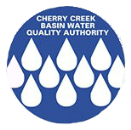Nutrient Depth Profiles
Highlights:
In WY 2022, the average seasonal (July- Sept) total phosphorous in the photic zone (top three meters of the Reservior), was 66 ug/L, which is lower than the long-term average of 94 ug/L.
The average seasonal total nitrogen, 984 ug/L, was higher than the long-term average of 896 ug/L.
The bioavailable forms of nitrogen (nitrate, nitrite, and ammonia), were the limiting nutrients for much of the year. Nitrogen-limited conditions give cyanobacteria a competitive advantage because they can fix nitrogen from the atmosphere.
Total phosphorus (TP) concentrations generally increased with depth. TP concentrations were elevated in the hypolimnion (lower layer of water in a stratified lake) from early spring through summer. Phosphorus increases in the hypolimnion can be caused by internal loading or result from the decomposition of algal cells and other organic matter settling from higher levels in the water column. Inflows of cold runoff water, which have a higher density than warmer surface waters and sink to the bottom as they enter a lake, can also directly increase hypolimnetic nutrient concentrations, especially in reservoirs.
TP is made up of both particulate and dissolved phosphorus. Particulate phosphorus includes both inorganic material, such as soil particles and clay minerals, and organic phosphorus, which includes particulate forms such as algal cells and plant fragments. Total dissolved phosphorus includes dissolved organic and inorganic material. Dissolved inorganic phosphorus is usually reported as soluble reactive phosphorus, which represents the bioavailable form of phosphorus. Reactive or bioavailable forms of nutrients are readily available for uptake by algae or cyanobacteria and increases in these concentrations are likely to drive chlorophyll-ɑ production.
Nitrogen and phosphorus are the nutrients that limit algal growth in natural waters. However in nutrient-enriched lakes and reservoirs and during periods of nitrogen limitation, cyanobacteria populations have an advantage over other types of algae and can easily dominate populations and limit diversity. N:P ratios calculated during WY 2022 demonstrated that the bioavailable forms of nitrogen were frequently limited.
Useful Links

Nutrient Depth Profiles
info_outlineEach square on this depth profile represents a sampling event. The different square colors represent the magnitude of the the value for the a sampling event. To learn more about a specific data point, hover over a square with your mouse.
Hey! This page is interactive.
- Change the start and end dates to look at different time periods
- Investigate different parameters using the parameter dropdown list
- View different locations using the surface water location list
- To learn more about a specific data point, hover over a square with your mouse.
